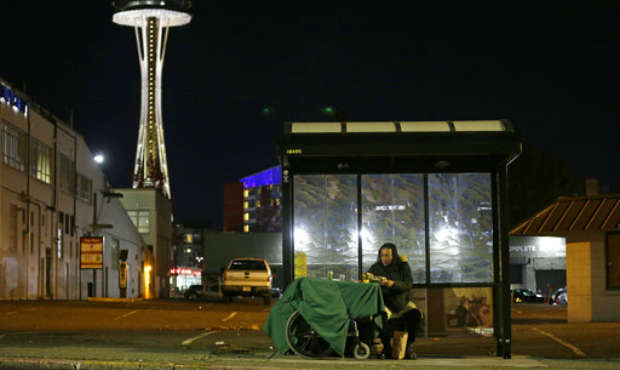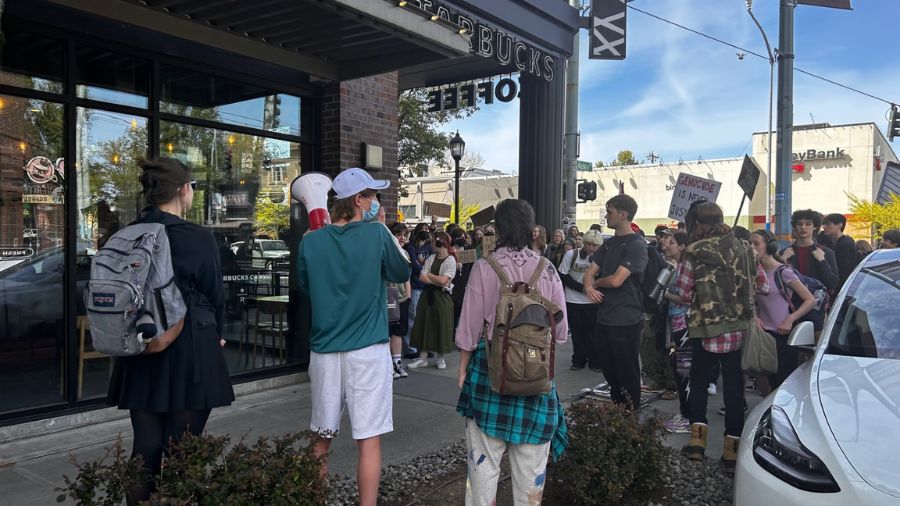Seattle mayor, HSD say investments in enhanced homeless shelters paying off
Feb 26, 2019, 2:57 PM | Updated: 3:01 pm

(AP)
(AP)
Seattle is investing millions more to address the homeless crisis, but is it working? It depends on who you ask.
The city’s Human Services Department is out with its year-end results for 2018, comparing spending and results for all of 2017 to all of 2018.
The city increased its spending on homeless prevention and response from just over $71 million in 2017 to nearly $87 million in 2018. Half of the spending in 2018 was for emergency response, which includes things like outreach, Seattle’s Navigation Team, and shelter. In 2018, much of emergency spending went to nearly doubling the number of beds in enhanced shelters, which operate 24/7, have showers and storage, and help people connect with services and housing.
Enhanced shelters
Interim HSD Director Jason Johnson says the shift away from basic mat-on-the-floor shelters to more enhanced shelters paid off in 2018.
“We’re seeing that these enhanced shelters are five times as effective at connecting clients to housing as basic shelter,” Johnson said.
“We’ve seen exits to permanent housing nearly double and these improvements have been consistent throughout the year,” he added. “Every quarter that we’ve looked at this data, we’ve seen consistently that the enhanced shelters – again shelters that are opened for a longer period of time that have a different level of service attached to them – services like housing navigation – then we’re able to move folks into housing more rapidly,” he added.
Tiny homes
Johnson says tiny home villages also saw improved results. Three new villages came online in Seattle in 2018 that he says really are similar to enhanced shelters, with case managers. About 650 people lived in them in 2018. There was a 10 percent increase in those people who moved on to housing — 33 percent compared to 23 percent in 2017.
The bulk of the rest of the city’s 2018 spending (30 percent) falls under the housing umbrella, which includes everything from rent at subsidized apartments and rapid re-housing. Rapid re-housing focuses on helping people who are homeless get into housing with short-term rental assistance (several months), along with case managers. The city says rapid rehousing helped get about 30 percent more people into housing last year compared to the year before, or 618 in 2018 compared to 476 in 2017.
Diversion
Another program seeing improvement is diversion.
“Diversion as an intervention is first and foremost a conversation between two people,” Johnson explained. “It’s a discussion between the head of household and the case manager to get really creative in exploring what options exist for the individual of the household outside of our homeless emergency system. It also comes with some cash assistance.”
With diversion, case managers try to connect homeless people back with their own friends or family, work out differences with landlords, or find other creative solutions. It can also provide them one-time money to help them get or stay in permanent housing. The city says diversion is responsible for the five percent increase in moving people out of homelessness than the year before, or 72 percent in 2018 compared to 67 percent in 2017.
Overall, Johnson says the city saw a 30 percent increase in exits to permanent housing last year.
“Permanent housing means that there’s no time limit, that it is your housing that you can stay in for as long as you need to stay in that housing,” Johnson said.
“Sometimes that’s a Section 8 voucher, federally subsidized public housing or vouchered housing,” he added. “Sometimes that’s permanent supportive housing – that is also public funded services attached, but a lot of times it is not either of those things … it is housing back in the private market and housing that individuals are paying for as they go.”
Questioning effectiveness of tiny homes
Erika Nagy, with neighborhood advocate group Speak Out Seattle, questions how the more than $2.5 million in increased spending on tiny home villages in 2018 is worth the 135 people exiting homelessness from them last year. She calls the villages, “tax funded injection sites close to schools, daycares and parks” that have negative health impacts in the surrounding communities and for the residents dealing with addiction they serve. Nagy also contends the villages lead to increased crime in their neighborhoods they’re set up in and more “pop-up” encampments.
Nagy also questions why, if these performance results are so glowing, there is no visible improvement in clearing tents and homeless people off the streets.
Mayor Durkan says she expects more tangible improvement will come when the city and county launch their coordinated regional approach to the homeless crisis.
Other highlights for the end of year numbers include:
• Investments showed an 87% increase in the number of Native American/Alaska Native households exiting homeless services programs over 2017 and a 27% increase in Black/African American households exiting homeless services programs over 2017.
• In 2018, a total of 431 Native American/Alaska Native households exited homeless services programs, an increase of 87% over 2017 (230 household exits), and 2,979 Black/African American households exited homeless services programs, an increase of 27% over 2017 (2,343 household exits).
• In 2018, HSD implemented Pay-for-Performance (PFP) on 46 programs funded through HSD’s 2017 Homeless Investments Request for Proposals (RFP) process in the areas of Enhanced Emergency Shelter, Transitional Housing, Rapid Rehousing and Permanent Supportive Housing. Basic Shelters, Day/Hygiene Centers, Outreach and Villages do not include pay-for-performance. Performance pay in City-funded homelessness contracts is a tool the department uses to help monitor and drive improvements at the individual provider level by analyzing data and working with those providers on how to improve services.
• HSD increased investment in tiny house villages in 2018 by over $2.5M, which both brought on new village locations and increased supportive services and case management at existing villages. City-permitted villages demonstrated an increase in both the rate at which households exit the program to housing (33% in 2018 vs. 23% in 2017) and the number of household exits (135 in 2018 vs. 102 in 2017).
• Permanent Supportive Housing (PSH): The most effective housing program for high-needs people experiencing homelessness, PSH offers ongoing housing and support services for people who need long-term assistance. Nationally, the number of people who are able to maintain their housing through PSH is counted in the “exits to permanent housing” category. PSH has a success rate of 93% in helping people maintain their housing or leave supportive housing to move to other kinds of permanent housing. HSD increased investment in permanent supportive housing from $9.3 million to $12.7 million in 2018.













